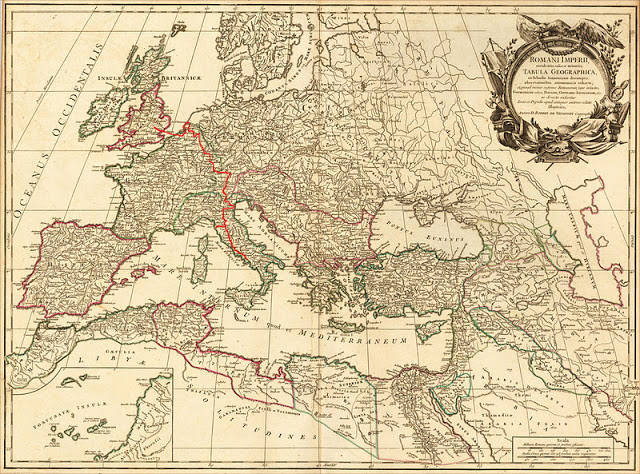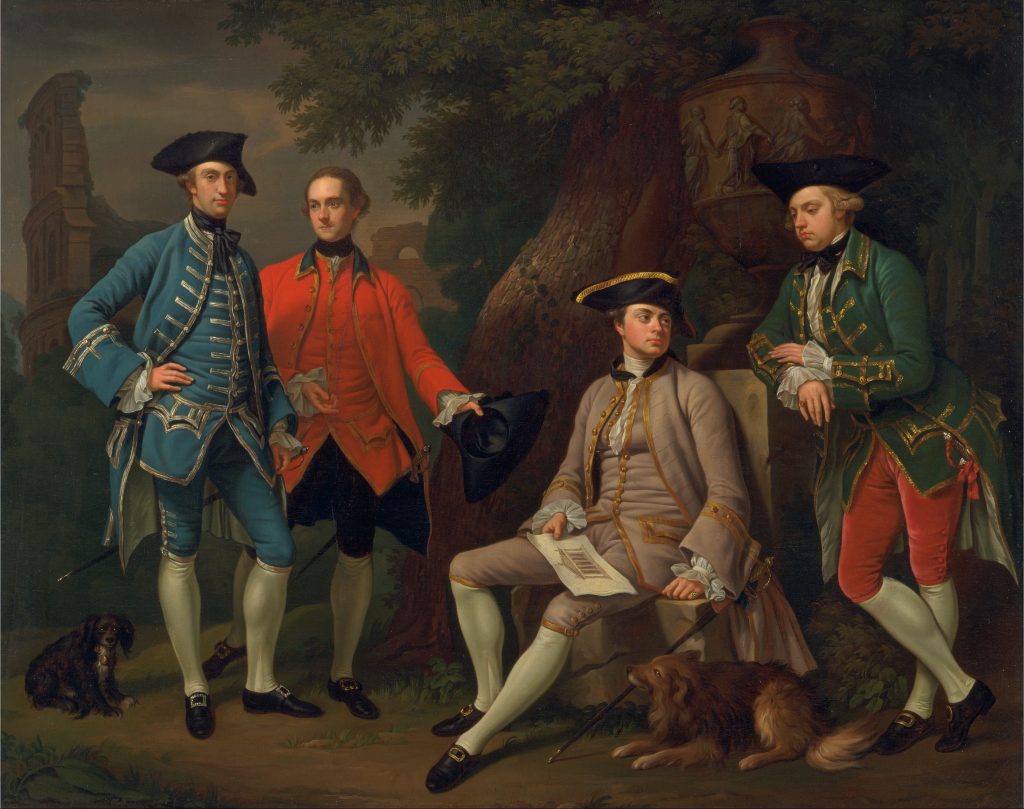The Grand Tour: 18th-Century Blueprint for Modern Travel

Today, taking a year off to travel feels like a rite of passage. But back in the 18th century, long before backpacks, Eurail passes, and budget airlines, Europe’s wealthiest young men were already doing their own version of a gap year—only theirs lasted up to three years, cost a fortune, and shaped the future of European culture.
This was the Grand Tour: a massive, once-in-a-lifetime journey across Europe that served as the final step in a wealthy young man’s education. Part cultural crash course, part political grooming, and part glamorous travel adventure, it was a trip that didn’t just change the traveler—it helped define taste, art, diplomacy, and even modern tourism itself.
From Clumsy Kid to Culture King: Why They Had to Go

Imagine yourself at eighteen: you’re the heir to a massive fortune, fresh out of university, fluent in Latin, and completely useless in polite society. In many ways, the Grand Tour functioned much like today’s gap year—a purposeful break between formal schooling and adulthood, meant to expose young people to the wider world and transform book knowledge into real-life experience.
For the sons of British lords, German dukes, and Scandinavian gentry, this was their reality. To be considered a true gentleman—ready for high office, a diplomatic posting, or a prestigious marriage—you needed polish. That was the Tour’s job. The pressure was intense: if you hadn’t “made the Tour,” you were socially incomplete. It was the road itself that served as the final, most expensive classroom.
The Original Wallet-Wrecker and the Bear-Leader
This trip was outrageously expensive. A two-to-three-year Grand Tour could easily cost a noble family up to £1,500 per year in 18th-century money. To put that in perspective, that was enough money to employ a skilled English laborer for 50 years! This cost alone ensured the Tour remained exclusively for the ultra-elite.
The young lord rarely traveled alone. He was saddled with a tutor, affectionately—and often accurately—dubbed the “bear-leader.” This poor academic’s job was brutal: he had to protect the heir from bandits, ensure he studied history, and, most difficult of all, keep him away from the endless temptations of Europe’s vice dens. Their duties were half-teacher, half-bouncer, and quarter-accountant, trying desperately to manage an astronomical budget of carriages, post-horses, and luxurious auberges.
First Stop: France – Time to Get Classy
The journey always started with a deep dive into the school of manners: Paris. While the ultimate destination was Italy for history, France was essential for acquiring le bon ton (the good tone) with six months dedicated entirely to ditching your provincial habits.
The young tourist’s schedule was packed:
- Language Boot Camp: French was the international language of power, so daily lessons were non-negotiable.
- Fencing and Dancing: These weren’t hobbies; they were essential for courtly posture, grace, and confidence—basically, how to look good while not tripping over your own feet.
- Social Immersion: The tourist had to attend Parisian salons, balls, and theatrical performances to learn the art of subtle, powerful European conversation.
The goal? To shed your awkward skin and gain the social armor needed to survive the competitive world of European politics.
The Climax: Italy – The World’s Biggest Antique Store
Once polished in Paris, the tourists crossed the treacherous Alps—a dramatic physical signal that they were moving from the modern world into the classical past.
Italy was the absolute peak of the Tour, the place where academic theories suddenly sprang to life. The itinerary was strict: Florence, Turin, Milan, and the twin jewels of the South, Rome and Naples.
Rome: The Original Art Shopping Spree

Rome was the main event. Tourists were obsessed with the Roman Empire’s ruins, viewing them as living lessons in law and imperial grandeur.
Did you know? Many tourists arrived just as major archaeological digs were underway in Herculaneum (from 1738) and Pompeii (from 1748). This was a literal gold rush! This fueled a massive collecting frenzy, with tourists hiring local experts, or ciceroni (guides), to acquire relics.
The cultural obsession centered on collecting:
- Antiquities: Roman busts, coins, fragments of statuary—anything ancient they could ship home.
- Art Commissions: Since they couldn’t buy a Michelangelo, they hired the next best thing. Artists like Pompeo Batoni were masters of the Grand Tour Portrait , painting the young man alongside an Italian ruin. These paintings weren’t just art; they were receipts, proving they’d completed the journey and were now men of virtù (cultivated excellence).
Venice: The “Fun” Stop
The educational rigor had to break sometime, and that time was Venice. This stop served as the Interlude of Indulgence. Imagine a city famed for its anonymity and controlled chaos during Carnival season. Masks allowed tourists to gamble, flirt, and indulge in all sorts of moral lapses far from their tutors’ desperate glances. It was a pressure-release valve, a place where they could practice the necessary vices of their class before returning home to become responsible leaders.

The Secret Network: Politics and the Coffee House
Beyond the art and the parties, the Grand Tour had a critical, powerful function: network building.
The route was a high-society circuit. British, German, and French aristocrats ran into each other repeatedly in the same Roman coffee houses and Florentine galleries. The friendships formed here became the secret handshake of European diplomacy.
When these young men became ministers, ambassadors, or generals years later, they weren’t dealing with abstract enemies; they were dealing with the acquaintance they’d gambled with in Venice or lent money to in Rome. This shared experience fostered a unique, unspoken understanding among the European ruling class, allowing for smoother political negotiation—a kind of aristocratic secret society. The logistics of the trip itself were also a crash course in statecraft, teaching them to manage currency, personnel, and foreign laws.
The Pitfalls: Debt, Disease, and Disappointment
The Tour wasn’t all statues and salons. It had a dark side. Many young heirs, enjoying their first taste of freedom, racked up crippling debts and engaged in serious moral corruption.
Fun Fact: Famous Grand Tour advocate Lord Chesterfield scornfully dubbed these failures “travelled fools”—young men who returned home empty-headed and bankrupt, having only chased fleeting pleasures.
Danger was constant, too. Roads were infested with bandits (especially in Southern Italy), inns were filthy, and diseases like smallpox were terrifyingly common. It took real grit and stamina, not just a big purse, to survive the three-year journey.
The Enduring Legacy: Why Your Holiday Exists
The Grand Tour may have died out with the geopolitical upheaval of the Napoleonic Wars, but its legacy is everywhere.
- Architecture and Design: Imagine your living room being decorated based on a Roman ruin. The objects and ideas brought back directly inspired the Neoclassical movement. Architects like Robert Adam toured Italy, meticulously sketching ruins and integrating those clean, classical motifs into British country houses. European taste was fundamentally changed.
- Public Collections: The vast quantities of art and sculpture acquired by Tourists eventually formed the foundation of many great public institutions, most famously the British Museum. They were the original art collectors, inadvertently kickstarting the field of art history.
- The Birth of Modern Tourism: The entire Grand Tour created the blueprint for how we travel today: guidebooks, reliable inns, established routes, and currency exchange systems. When the middle class finally got to travel in the 19th century, they followed the exact trail. Thomas Cook, the pioneer of mass tourism, was effectively selling a democratized, two-week version of the aristocratic three-year Tour.
The Grand Tour Europe was more than a trip; it was a cultural boot camp that cemented the authority of classical learning at the heart of Western taste and power. The 18th-century gentleman may have finally returned home, but the infrastructure he built, and the transformation he underwent, set the stage for the modern world of travel.
